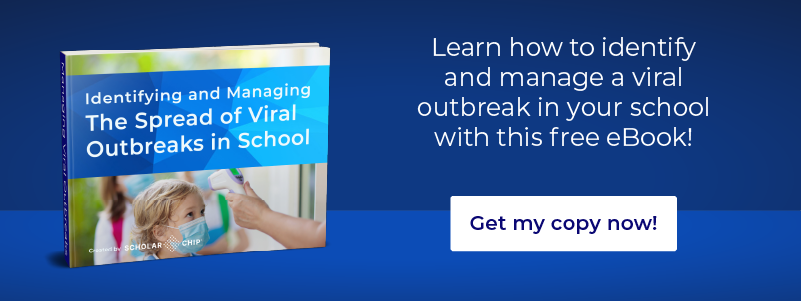According to the CDC, COVID-19 spreads when a person infected with the disease coughs, sneezes, or even talks. While the virus can be transmitted in multiple ways, the most common method is when a person stays within six feet of an infected person in an enclosed space for longer than ten minutes. Furthermore, people can contract the virus by touching an object, like a pencil or a tape dispenser, after an infected person does and then touching their own face.
If schools were to reopen as usual, then they would become hotbeds for the disease. Students sit near each other in enclosed classrooms for longer than ten minutes. They don’t have physical barriers protecting them from the air particles that their neighbors expel simply through talking or laughing. Students also regularly share communal objects, like markers or glue, in a standard classroom.
We don’t recommend opening schools as usual for the new school year, but there are many ways for controlling the spread of the virus on your campus. Let’s look at how to modify your campus, classrooms, and social norms to make learning safe for students and faculty.
Increase ventilation and use outdoor spaces when possible.
The more outdoor air that comes into your building, the less likely the virus will spread. If your building doesn’t have much airflow, then viruses will linger in the air for longer, which in turn, is likely to contaminate more people. You may be able to increase your ventilation by opening windows or doors and consulting your HVAC professional.
Another way to increase ventilation is to allow fewer people in a room or space at a given time.
Alternatively, as COVID-19 is less likely to spread while outside, you can also consider utilizing your outdoor spaces, like playfields and campus grounds, to hold classes. Outdoor classes are a way to minimize the risk of spreading COVID-19—at least until colder temperatures force classes inside again.
Develop a cohort model for controlling the spread of the virus.
To simplify ventilation improvement and using outdoor spaces, many schools have turned to cohort models. Administrators create small groups of students who stay together throughout the day, rather than having students intermix with multiple classmates as they move from class to class.
A cohort stays in a specific classroom or outdoor space for the whole day—whether it’s a full school schedule or a shortened one—and teachers come to them, rather than the other way around.
A cohort model limits the number of people whom a student would infect if they came down with COVID-19.
Organize a team that disinfects frequently-touched surfaces.
COVID-19 can spread if an infected person touches a surface, and then another person touches that surface and then touches their face. That’s why it’s crucial to have your cleaning team regularly disinfect high-touch surfaces, like doorknobs, sinks, desks, etc. When a group of students leaves a space, your cleaning team should disinfect that space before the next group enters.
Communicate with parents about keeping sick or virus-exposed children home from school.
Parents need to take their children’s illnesses seriously enough to keep them home from school, even if they’re only exhibiting mild symptoms. COVID-19 doesn’t always look like a severe illness in children, but it can still be transmitted to others. Furthermore, if a student is exposed to the virus by coming into contact with someone who has the disease, parents should quarantine their children at home for two weeks.
It’s important to communicate these expectations to parents so they don’t send their infected children to campus.
How ScholarChip Can Help with Controlling the Spread of the Virus
These recommendations rely on three major factors: limited class sizes, class cohorts, and communication with parents. Though these are critical tactics in controlling the spread of the virus, they are also logistical challenges.
ScholarChip tools can help. Before you bring students back to campus, you should first install Secure Door Access card readers at your campus entrance and on classroom doors. Students and faculty must then tap their unique One Cards onto these entry points before they can enter the space.
With this technology, you can tackle three issues. First, you can make sure class cohorts find each other and move together throughout the day. Second, when a group of students leaves a room, your cleaning crew knows that they can then come in to disinfect the space. Finally, this monitoring gives you information about what students were in a classroom with a COVID-19-infected person. This kind of tracking simplifies communicating with these students’ parents if they need to keep their children quarantined.
These same techniques can be useful for monitoring visitors to your campus. ScholarChip’s Visitor Management software checks in every person who enters your campus building. Once they leave, the spaces they entered can be sanitized, and if someone whom a visitor came into contact with was infected with COVID-19, you could easily inform them.
Conclusion
When controlling the spread of the virus at your school, it’s important to remember three key features: keep students and faculty six feet apart, remind children of safety practices frequently, and build relationships with parents and staff. With these strategies in place, you’ll be much better equipped for opening your school.
The ScholarChip team is dedicated to helping school leaders maximize the safety and well-being of students and the entire school community.
Now sure what you should do to be able to identify and manage the spread of a viral outbreak in your school or school district? Feel free to chat with one of our school crisis communication specialists today!


